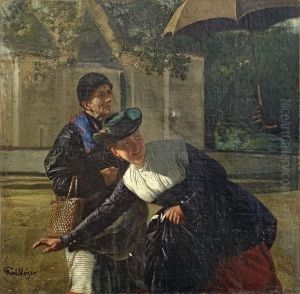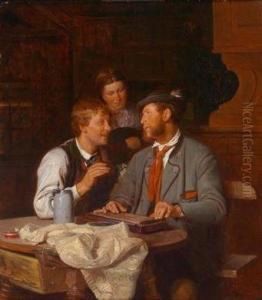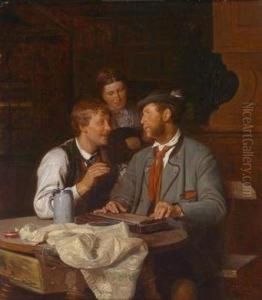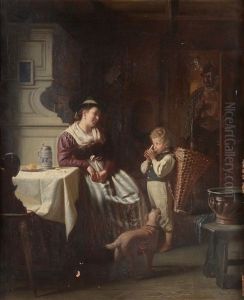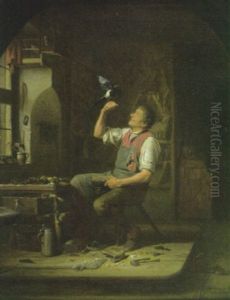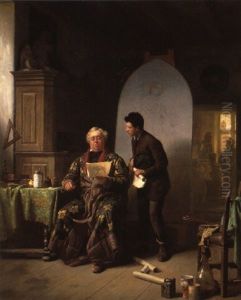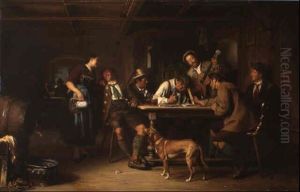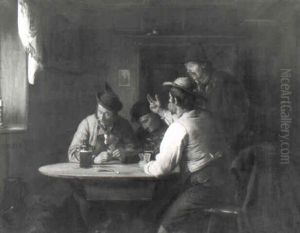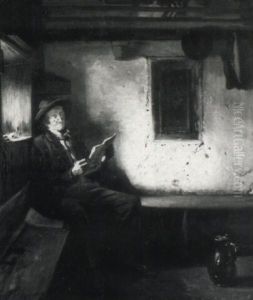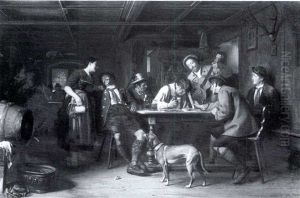Ferdinand Meyer-Wismar Paintings
Ferdinand Meyer-Wismar was a German artist known for his contributions to painting and graphic art. Born on November 13, 1886, in Wismar, Germany, Meyer-Wismar showed an early interest in the arts. He pursued his artistic education at the Royal Academy of Arts in Munich, where he was influenced by the prevailing styles of the time, including Impressionism and Jugendstil, the German variant of Art Nouveau.
Meyer-Wismar's body of work reflects a range of artistic styles, and he was adept at adapting to the changing artistic trends throughout his career. He was particularly known for his landscape paintings, which often featured the serene countryside of Germany. His works are characterized by a sensitive use of color and a focus on the interplay of light and shadow, which imbue his landscapes with a distinctive atmosphere.
Apart from painting, Meyer-Wismar was also a skilled graphic artist. He created illustrations for books and magazines, as well as posters and other graphic works. His graphic art is noted for its clear lines and decorative elements, which were typical of the Jugendstil movement. Through his graphic art, he contributed to the visual culture of the early 20th century in Germany.
During his career, Meyer-Wismar participated in numerous exhibitions and gained recognition for his artistic achievements. His works were collected by various art institutions and private collectors, and they continue to be appreciated for their contribution to the German art scene of the early to mid-20th century.
Ferdinand Meyer-Wismar passed away on July 5, 1973. While he may not be as widely known as some of his contemporaries, his work remains an important part of the history of German art. His paintings and graphic works continue to be studied and exhibited, offering insight into the stylistic developments and cultural milieu of his time.
